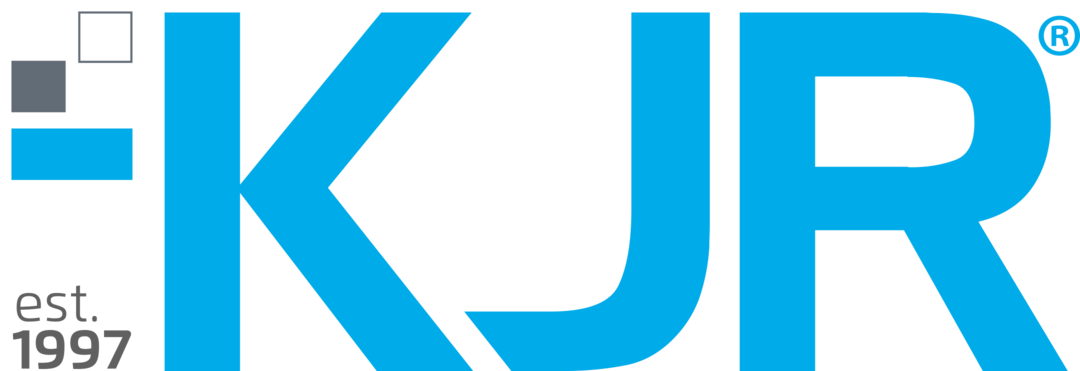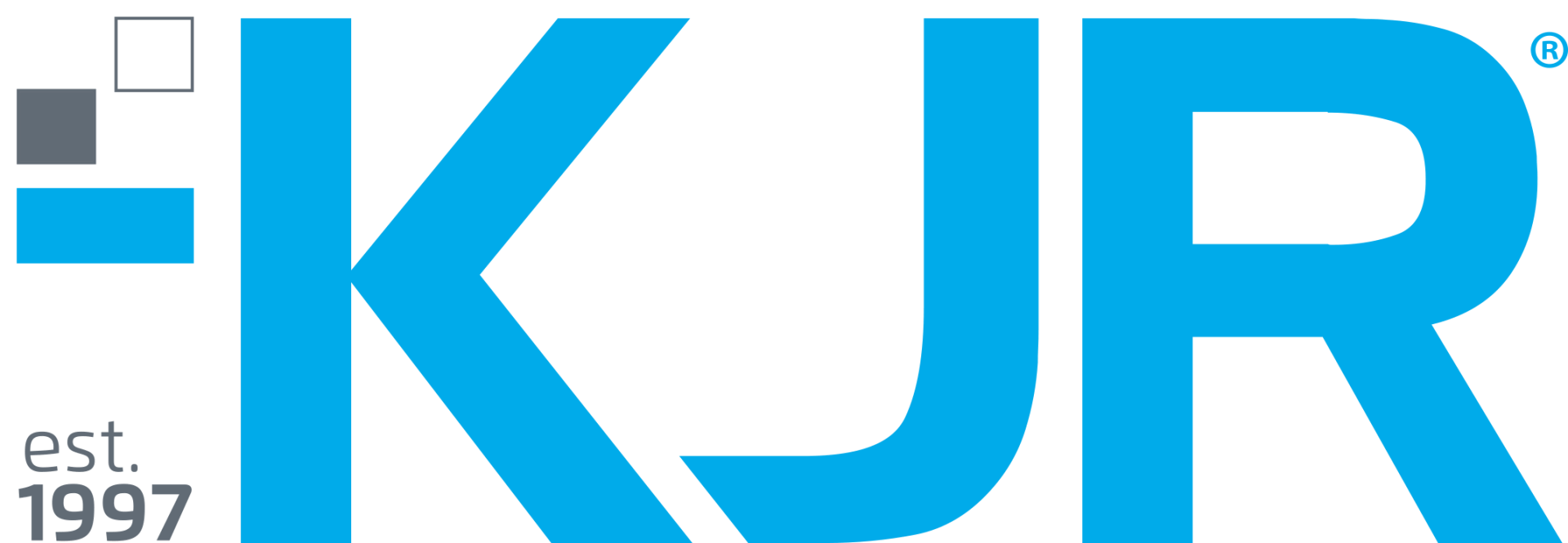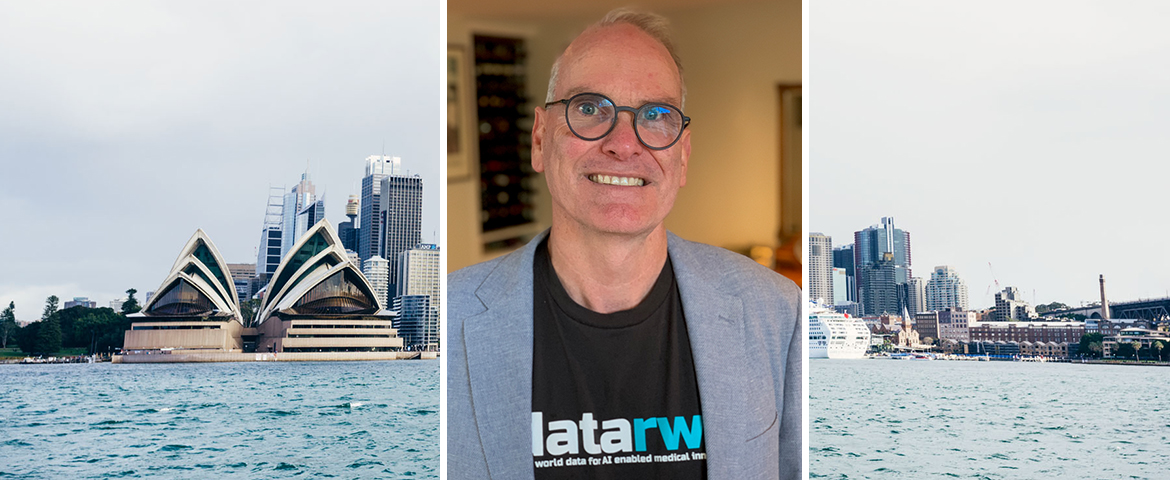Our Industry Allies: Steve Woodyatt, CEO at Datarwe
Partnership, collaboration and learning from others is so important to the development and success of KJR. Join us as we chat to some of our closest industry allies – old friends, new peers and general movers-and-shakers. This month, we sat down with Steve Woodyatt, CEO of Datarwe.
“My headset’s been acting up a bit, lately.”
Steve Woodyatt speaks from the other side of the virtual meeting room, the COVID-19 new-norm. Technical mishaps still occur in the home office, even for the CEO of medical innovation organisation Datarwe. Despite the pandemic, life has gone on and so have our jobs. For Steve, the impact his organisation will have on the MedTech field has only amplified.
In his “three-phase” career, Steve has journeyed through various technical functions in numerous industries, making headstrong strides in technological innovation. Throughout it all the connecting theme has been “technology, big data and analytics”. After over 30+ years of experience and expertise, he has landed firmly at the helm of Datarwe.
Datarwe was born from the desire to produce positive change in the medical industry. Using real world data stored in the innovative Precision Medical Data Platform (PMDP), industry stakeholders will gain immediacy in the transformation of data to practical power, reducing the timeframe for seeing patient outcomes. Enabling collaboration between medical researchers and professionals is a key feat that the medical platform will encourage – something especially relevant in the ongoing COVID-19 landscape.
In conversation with KJR, Steve opened up about the possibilities of Datarwe’s innovations, KJR’s relationship with Datarwe, his favourite drop of wine and what the “next industrial revolution” might look like.
KJR: Datarwe has received an abundance of praise so far and has a very human mission in permanently improving medical innovation. What drew you to this role?
Steve: Seeing the positive role of technology, (especially AI and machine learning), can play in improving the overall human condition. Major technological changes occur in waves, and I’ve always been interested in roles that can help redefine whole industry waves and unlock ways of solving new problems.
KJR: And what other industries have you been attracted to in your career? What has your professional journey to leadership been like?
Steve: Admittedly, when I started out in the 80s, big data wasn’t a term – nor was analytics. But even in those days I was involved in enormous signal processing challenges and in the resources industry, such as the development of airborne and satellite based hyperspectral remote sensing platforms. In those days hundreds of megabytes of data was an enormity that could barely be comprehended. In my first career phase was I was an applied researcher at BHP Research and got very hooked on the concept of being able to extract features from large datasets. I loved taking and applying data to a wide range of business problems. I did so for 13 years before I made a career change into finance, which again has an order of magnitude scale large dataset challenges as well. I managed a couple of fully automated and data-driven hedge funds, looked at automated technology for trading decisions at the high speed, and ended up creating software and then an industry utility platform company that transacted trading activity in excess of $150 billion (nominal) a day.
KJR: So you’ve had quite a journey getting here, then.
Steve: Yes, definitely. Having successfully exited those businesses to private equity firms in the U.S., in this third phase of my career I wanted to take the same common theme of big data, data analytics and utility plays for the industry and apply that to medical innovation and technology.
KJR: And how did your interest in medical innovation develop? Can you pinpoint a moment or decision that lead you down this path?
Steve: I’ve always had an interest in medical technology – my earliest memories are of my father being one of the earliest recipients of medical transplant technology in Australia. His transplant was one of the first successes and gave him an extra lease on life while I was a young boy, allowing me to have a relationship with the father I otherwise wouldn’t have known. That life experience helped colour and frame exactly what it was I wanted to achieve in life.
KJR: There’s probably no such thing as an average day at work for a CEO, but what does a really good day look like for you?
Steve: I would be in the mix with my team, which unfortunately is a little curtailed these days with COVID, and most definitely being in conversation with customers – picking through their issues and challenges they face in the delivery of better patient outcomes. Discussion time with clinicians and health professionals is extremely limited, so any window of opportunity to “get strategic” and discuss what solutions may assist lifting the level of care and outcomes of the health system is very gratifying for me.
KJR: Datarwe’s PMDP seeks to create a convenient digital platform for medical professionals. In what ways will the PMDP have a significant impact on the medical field?
Steve: The Precision Medicine Data Platform is a focal point for connecting all the stakeholders in the health ecosystem and to encourage rapid collaborative innovation. This is what I like about it so much – an industry utility play for data exploration, and data-driven medical application development nationally and internationally. We’re hosting access to acute care physiological streaming data in a secure, governance “sandbox” with readily accessible AI/ML and advanced analytics toolsets for researchers across the health vertical. Our aim is to increase R&D collaboration between clinical research groups and drastically reduce the time it takes for new ideas to impact healthcare delivery and patient outcomes – translating validated research outcomes back to the hospital bedside as quickly as possible. Whilst the platform’s core customers include clinical researchers from within the health system, academia and also med-tech device manufacturers, there’s also wide applicability of the datasets to other stakeholder groups within the health system to increase operational efficiencies and the regulators who monitor the efficacy of clinical therapies.
KJR: And how quickly do you expect to see adoption from relevant organisations of this software or with this platform?
Steve: The platform demonstrates explicit value for collaborating clinicians and researchers, largely in the immediacy of the availability of data to power their research. They see the ability for the platform to substantially reduce the timeframe for the result of their investigations to be translated back to the bedside to see patient outcomes – so organisations such as Queensland Health have been eager to see the platform’s aims adopted.
KJR: You mentioned a few times the importance of professional collaboration between stakeholders, which the PMDP focuses on. Why do you think it’s important to enable this work ethic?
Steve: To me, collaboration is equivalent to learning. Without collaboration, at best we’ll make individual incremental improvements in any facet of life. When we collaborate at all levels, from locally to internationally, that’s when rapid changes in innovation are seen over history. Not all collaborations are necessarily planned or intentional – just look at the pandemic we’re in – but shared need drives innovation, and in health, no individual researcher has access to the complete dataset or set of episodes needed for innovation. It’s the sharing of the deep and wide nature of datasets across jurisdictions and different health systems internationally which will increasingly be the key to unlock future health innovations.
KJR: And the current pandemic is a clear example of that, too.
Steve: Exactly. Whilst Australia has been relatively lucky in number of cases, there’s simply just not enough data here alone, unless we collaborate internationally, to be able to generate therapies that could either assist in the treatment or ultimately eradicate the pandemic.
KJR: What are some of the challenges encountered through the PMDP’s development?
Steve: The biggest issue by far is access to data. Healthcare is a highly regulated industry and we have to be prepared to deal with arduous and sometimes dated environments where regulation lags the requirements for supporting innovation. Ultimately, this causes economic harm and decelerates the response of therapies and cures, potentially resulting in more deaths. We need to look at having more nimble regulatory environments for data sharing, especially when in the grip of a pandemic.
KJR: Alongside data sharing, security concerns will inevitably come with the digitisation of patients’ medical data. How will Datarwe make efforts to ensure data is kept secure?
Steve: We recognise that the security of medical records and patient data is paramount. We only deal with secondary, de-identified and anonymised data, so to put in place the privacy, security and ethical handling of data, no data on the platform will leave the custodianship of the data providers or the health system. Datarwe assists with the rigorous de-identification and anonymisation of the data held by the custodians and the health system, and providing a license for other consumers or medical researchers to use that de-identified data under a strict access and stewardship process governed by an independent data trust. This trust is comprised of senior representative clinicians and assurance professionals, nominated by the individual data providers. They oversee the process assurance and accreditation of all the processes that Datarwe undertakes when supplying and managing the de-identified data for approved research projects. This allows researchers to securely use de-identified data to develop innovative, more cost-effective treatments and therapies.
KJR: COVID-19 has impacted every business in different ways. How has it impacted the role you play for Datarwe and what does it mean for your organisation?
Steve: Like most organisations we’ve learned very quickly to work virtually – that’s a common theme across the whole population these days. However, as coronavirus essentially kicked off contemporaneously with the launch of the Datarwe PMDP platform, we had the perfect opportunity to demonstrate the benefit of a data-sharing platform by delivering for Queensland health a rapid response COVID-19 ICU dashboard application – it sits on top of the clinical record systems for the intensive care units at the Gold Coast University Hospital.
KJR: Definitely a silver lining in such strange times.
Steve: Yes, ultimately the requirement is for not just clinicians and nursing unit managers to be able to see the resources that they have at their disposal in a single ICU or across the state and all size ICUs, but for hospital operations management, for the public health officials to be able to see their resources, the cases they might have, and to be able to visualise statistics in real time has been a terrific first demonstration of the power of a data-sharing platform.
KJR: Let’s talk about your relationship with KJR and where our synergies lie. KJR has had relationship with Datarwe since its formation. Can you give an overview of how this came about?
Steve: Dr Kelvin Ross (KJR’s Founder and Chairman) is one of two founding partners and thought leaders in the Datarwe company. Kelvin’s vision for the application of AI and machine learning across all industry verticals and his passion for seeing it applied in the public health arena has driven KJR’s strong founding relationship with Datarwe. In KJR’s own name there is a natural fit with the testing and assurance services the company can provide, but also recognises their increasing focus on providing data governance and AI/ML validation services for a wide range of digital transformation projects.
KJR: How do you see the role of testing and assurance come into play regarding PMDP’s implementation?
Steve: It comes across both in the cleansing validation and assurance of the data and when validating and translating it back into clinical practice. There can be no less of a demonstrated case for assurance and quality when we talk about designing new medical devices or therapies. It’s absolutely critical that the testing and assurance is a core module of the entire health product development cycle. The regulatory environment and the sensitivity of dealing with medical records and testing assurance are paramount.
KJR: There are so many ‘tech trends’ rolling through, what have you been most surprised to see hitting or missing in the industry?
Steve: I’m constantly surprised by distributed ledger software technology. It’s very current, very hip, often generally referred to under the banner of “blockchain”. But, I’m surprised there hasn’t been more demonstrable large applications to redefine business processes in some industry verticals than there has been to date. We’re all aware of Bitcoin and Blockchain for alternative currencies. That’s a fight that will play out over the next few years, and as well as another highly regulated industry, has a lot of watching briefs from all the various different governments regulators in the world.
But moving away from the use in currencies, distributed ledger technologies has a great potential for also providing auditable secure trials of transactions that can be applied in a large variety of industries. I’m still waiting to see a good, robust example of that in implementation.
KJR: Not just in the healthcare vertical but in other industries as well, where do you see the role of AI and Big Data in enabling organisations to evolve in the future?
Steve: There’s no doubting that AI and big data is in every facet of our life today, whether we like it or not. When you look at everything from consumer product marketing, our Internet of Things (IoT) devices like health watches, phones and various personal devices, we’re actually creating a sea of data which is mineable. Frankly, there’s a vast array of data mining trials that we’re individually totally unaware of. It is probably akin to the next industrial revolution. There is simply not a professional I can name who won’t be impacted by big data and AI.
KJR: And when you think about the next 10 years in the context of technology, what keeps you up at night?
Steve: What keeps me up at night is not a concern, but it’s a fascination of the rapidity and the ever-increasing speed of change and adoption of technology. It fascinates me that it’s getting harder for professionals to keep relevant and to keep up-to-date with technological advances. There’s so much investment and effort and so many tools, and AI and machine learning are one of those fundamental changes, which means that we will evolve our technological savviness at a rate that we can’t currently comprehend. Equipping our younger generation with the emotional intelligence, as well as the intellectual intelligence to cope with technological change in the next 10 years, I think is going to be very, very important for us.
KJR: Obviously being a CEO is time-consuming and pressure-filled, so what do you do to get away from it all?
Steve: You never really get away from being a CEO, especially when there’s international collaboration involved, but in the rare moments I try to keep a balanced life. I’m married with two children and right now have a window of opportunity with my children still being at home, so I’m trying to take advantage of that. To keep myself fit I cycle a couple of times a week, go to the gym, play tennis with the kids and all those sorts of activities. I’m also a music lover – I’m a violinist actually. And other than that, I have a keen interest in wine and food.
KJR: What’s your favourite type of wine?
Steve: Oh, it’ll be red. In my previous role in my London office I was determined to expand my palate and I took the opportunity of residing in Europe to look at a lot of different French Bordeaux and various other wine types. I ended up with a friendship with a local wine distributor – she imported new world wines and I found a very favourite wine variety for me: Carménère. Not European at all (Chilean), but hey!
Finally, what is your advice to tech professionals hoping to make a difference in the world like you are at Datarwe?
Concentrate less on the technology. Be very, very competent at what you do, but look at the problems. What drives me, what cranks my handle is solving problems and applying technology to the solution of a business or in this case health problem. Technology for technology’s sake is all well and good, but I think you’ll find that many leading technological entrepreneurs get their kicks from seeing the adoption and the impact that their technological prowess can have in an industry or to a problem or issue. I encourage aspiring tech professionals to open their eyes to the various opportunities there are to leverage their technical skills for the betterment of all.
…
To learn more about Datarwe and Steve Woodyatt’s impact on medical innovation, keep updated here.
Next month we’re getting to know Sue Keay, CEO of Queensland AI Hub. Follow KJR on LinkedIn so you don’t miss out.









